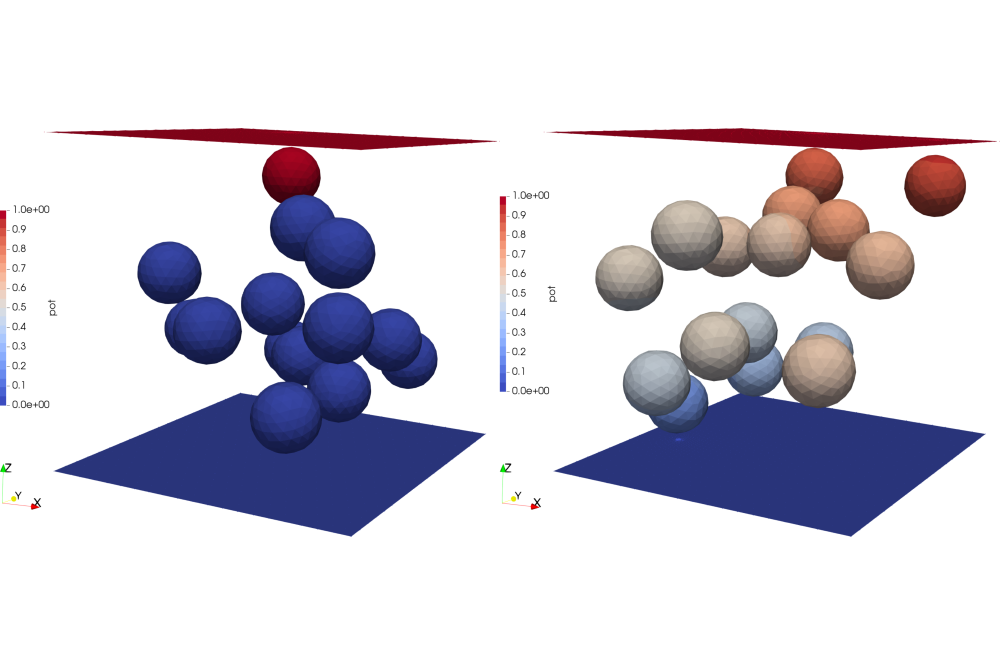Determination of Effective Electric Conductivity of UFG/PEI-Composites Considering Quantum Mechanical Tunnelling Effects
Introduction
To reduce fuel consumption, the focus in vehicle construction shifts to lightweight constructions based on Mg or Al alloys. Unfortunately, their corrosion resistance often isn't sufficient for application in everyday life. Especially Cl-ions cause troubles. Coatings deliver both circumvention of corrosion and ensurance of functional reliability of the load-bearing components. Cr- based protective layers provide effective protection but are unattractive due to toxic by-products within their production. As an alternative, nanocomposites of unfunctionalized exfoliated graphene (UFG) and a polyetherimide (PEI) matrix should be used. The PEI matrix inhibits electric conduction, while graphene reduces transport of Cl-ions. Nevertheless, electric conductivity of the composite is enhanced by the graphene inclusions. Besides the simple electric conduction, quantum mechanical tunnelling occurs at increased graphene volume ratios. This may lead to a tunnelling percolation network, which enhances the electric conductivity vastly. So far, the perfect mixing ratio of graphene and PEI matrix is unknown. Therefore, the electric conductivity of UFG/PEI-composites, considering quantum mechanical tunnelling effects, will be determined by computer-aided homogenization based on the finite element method. Also, the diffusion of Cl-ions is considered, to maximize the corrosion protection of the UFG/PEI coating. For the sake of physically reasonable and precise results, the used fine finite element meshes lead to increased computational effort. To solve the corresponding equation systems within a reasonable amount of time, we required access to the HPC.
Methods
In this project a code to generate representative microstructures of a polymer-graphene composite as CAD structures was developed. Furthermore, a user element for finite element simulation with the software MOOSE (Multiphysics Object-Oriented Software Environment) was evolved and tested. The main purpose of the user element was the implementation of quantum mechanical tunnelling in composite materials by considering additional tunnelling fluxes between surfaces of conducting inclusions. In addition, a homogenization method was used to calculate effective conductivities of the generated microstructures.
Results
Main results of the project are the successful development of both generation of representative microstructures and development of a finite element user element, which considers quantum mechanical tunnelling effect on microscale. The functionality of microstructures generation and user element implementation was proven, by matching literature values of the correlation length exponents and determination of physical reasonable effective conductivities of various composite microstructures.
Discussion
While the development of the user element was successful and the calculation of effective conductivities leads to reasonable values, verifying absolute values of effective conductivities was impossible. Especially the occurring convergence problems and lack of literature values for the investigated microstructures prohibited the verification.
Thus, further research should investigate the contribution of quantum mechanical tunnelling to effective conductivity in real microstructures. Also, a different material combination with less divergent electric conductivities might reduce the occurring convergence problems. In addition, the generation of microstructures can be reworked to be able to investigate composite microstructures with uniformly distributed inclusions.




